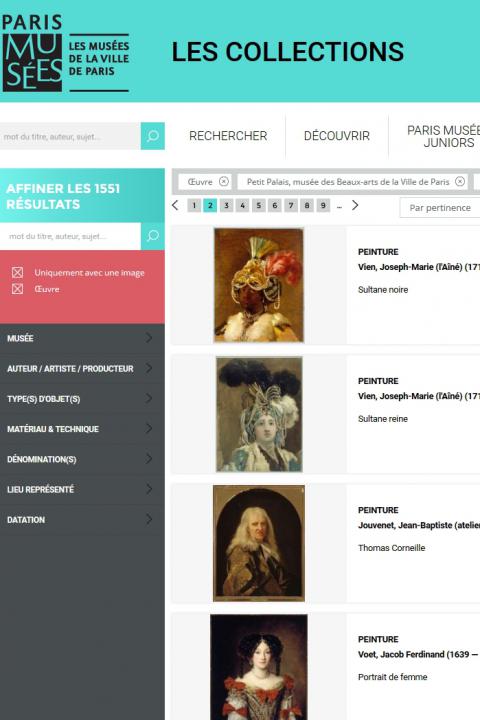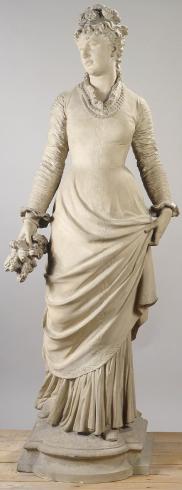In 1876, Chatrousse exhibited his Parisian Woman. This was one of the first sculptural representations on a large scale of a contemporary unknown woman.
Rather than a portrait, the artist has created a type, like Gavarni: a young woman dressed in the latest fashions, holding a bunch of lilac. Although sculptors under the Third Republic tended to depict working-class subjects (the Petit Palais owns a bread seller plying her trade in the streets of Paris by Jules Coutan) the late 19th century demonstrated a marked enthusiasm for Parisian society ladies. These are often very lively statuettes (by Gauguin, Caro-Delvaille or Dejean for example) echoing contemporary prints and paintings which were largely devoted to this lively, mischievous and elegant figure who was the archetype of femininity.
The genre reached its peak in 1900: Maureau-Vauthier’s monumental Parisian Woman, dressed in a straight skirt, bolero and evening coat, dominated the entrance to the Universal Exhibition on the Place de la Concorde, embodying the city of Paris welcoming visitors.
A. S.

City of Paris municipal collection's website
The collections portal can be used to search the collections of Paris’s 14 municipal museums (approximately 336,000 works, including 43,000 belonging to the Petit Palais).
It is also possible to download around 12,000 images of the museum’s works free of charge.
Access the Museums of the City of Paris collections portal
Extern databases
Discover a selection of databases online presenting works from the Petit Palais or documents concerning the history of the museum.

